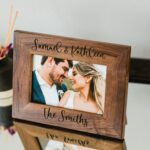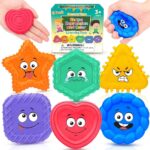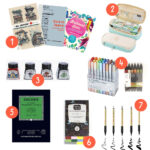I. Introduction to Upcycling Feed Bags
II. Creative Upcycling Ideas for Feed Bags
III. Tips for Working with Feed Bags in DIY Projects
Introduction to Upcycling Feed Bags
Have you ever thought about what happens to those vibrant, colorful feed bags after their original contents are gone? Instead of tossing them into the recycling bin or, worse, the landfill, why not give them a second life? Upcycling feed bags is not just a trendy eco-friendly practice; it’s a creative way to reduce waste while adding a unique touch to your home or garden. Plus, it’s a fun and rewarding project that requires minimal investment!
First off, let’s chat about what upcycling really means. Simply put, upcycling is the process of taking something that might otherwise be considered waste and transforming it into something new and more valuable. When it comes to feed bags, this can mean anything from DIY home décor to practical gardening solutions. The possibilities are as vast as your imagination!
Why Feed Bags?
So, why should you consider using feed bags for your upcycling projects? Here are a few reasons:
- Durability: Feed bags are made from tough materials, often resistant to tears and water. This makes them ideal for a variety of projects that require sturdiness.
- Variety: These bags come in numerous colors and patterns, often featuring eye-catching graphics. You can easily find bags that suit your style or project needs.
- Eco-Friendly: By choosing to upcycle, you’re contributing to a more sustainable environment. This is a simple way to reduce waste and promote recycling in your community.
- Cost-Effective: Feed bags are typically available for free or at a low cost, making them an affordable option for anyone looking to embark on DIY projects.
The Growing Upcycling Trend
The upcycling movement has gained momentum in recent years, as more people seek ways to live sustainably and creatively. Social media platforms are filled with inspiring upcycling ideas, and feed bags are often at the forefront. Whether you’re a crafting novice or a seasoned DIY expert, using feed bags opens up a treasure trove of possibilities.
Many people have embraced the idea of giving their household items a new purpose. This not only helps to declutter but also allows for a unique expression of personality and style. Think planters, tote bags, or even art pieces that spark joy and conversation. Upcycling feed bags not only fuels creativity but also contributes to a larger conversation about sustainability in our everyday lives.
Getting Started
If you’re ready to dive into the world of upcycling feed bags, it’s as simple as collecting a few bags and brainstorming your next project. Start small with something like a simple tote or a decorative planter, and as you gain confidence, you can tackle more ambitious projects. Remember, the key to successful upcycling is to let your creativity flow and not be afraid to experiment!
In conclusion, upcycling feed bags offers a fun and resourceful way to enhance your creativity while being kind to our planet. So, grab those empty bags, gather your crafting supplies, and let’s kick off your upcycling adventure!
Creative Upcycling Ideas for Feed Bags
Welcome to the world of upcycling! If you’ve got some feed bags lying around, you’ll be thrilled to know they can be transformed into some amazing DIY creations. Not only are these projects eco-friendly, but they also let your creativity shine. Let’s dive into some fun and practical upcycling ideas that will have you repurposing those feed bags in no time!
1. Stylish Tote Bags
Why not turn that sturdy feed bag into a chic tote? With just a few simple steps, you can create a functional accessory for your shopping trips or days at the beach. Here’s how:
- Cut: Trim the feed bag to your desired size. A large tote is great for carrying groceries, while a smaller version can be perfect for an everyday handbag.
- Sew: Use a sewing machine or hand stitch to secure the sides and create a bottom. Don’t forget to add handles—cut strips from the bag or use a different fabric!
- Decorate: Feel free to personalize it with fabric paint or patches to give it that unique touch.
2. Garden Planters
If you’re an avid gardener, feed bags can make fantastic planters. They’re durable and provide great drainage for your plants. Here’s a quick guide:
- Prepare: Clean the bag thoroughly and make sure it’s dry.
- Poke holes: Use a sharp tool to create drainage holes at the bottom.
- Add soil: Fill the bag with potting soil and plant your favorite herbs or flowers.
This not only adds a splash of color to your garden but also gives your plants a unique home!
3. Pet Beds
Your furry friends deserve comfort too! You can create a cozy pet bed using feed bags:
- Layer: Take two feed bags and layer them. This will provide extra cushioning.
- Fill: Stuff the bags with soft materials like old blankets or pillows.
- Sew shut: Close the bags securely to keep everything in place. Now, let your pet curl up in their new favorite spot!
4. Decorative Wall Art
If you’re looking to add a rustic touch to your home decor, consider making wall art from feed bags:
- Cut shapes: Use scissors or a craft knife to cut out interesting shapes or letters from the feed bags.
- Frame: Mount these pieces onto wooden boards or canvas frames for a striking visual effect.
- Hang: Display your artwork in different rooms to showcase your creativity!
5. Upcycled Tablecloths
Transforming feed bags into tablecloths can add a playful vibe to your dining area:
- Size it up: Cut the bags to cover your table while creating a little overhang.
- Sew edges: Hem the edges to prevent fraying.
- Style: Pair it with fun dishes and centerpieces for a delightful dining experience.
So, there you have it! With a little imagination and creativity, those old feed bags can be turned into something fabulous. Whether you opt for a tote bag or a garden planter, you’ll be doing your bit for the planet while enjoying the satisfaction of creating something uniquely yours. Happy upcycling!
Tips for Working with Feed Bags in DIY Projects
Hey there, fellow DIY enthusiast! If you’re diving into the world of upcycling feed bags, you’re in for a treat. These colorful, durable bags can be transformed into a variety of creative projects, but let’s talk about how to make your experience smooth and enjoyable. Here are some handy tips to get you started!
1. Choose the Right Feed Bags
Before you get crafty, it’s important to select the right feed bags. Look for bags that are:
- Clean and Dry: Make sure there are no remnants of feed, dust, or dirt. A quick rinse with water and a sun-dry can do wonders.
- Sturdy: Check for tears or holes. You want bags that can withstand some wear and tear in your projects.
- Patterned or Colorful: The aesthetic of your finished project can be greatly influenced by the design of the bag. Choose bags with vibrant colors or interesting graphics!
2. Gather Your Tools
Having the right tools can make all the difference. Here’s a quick list of essentials you might want to keep handy:
- Scissors: A good pair of scissors will help you cut through the material with ease.
- Plastic or Canvas Needle: These needles are perfect for sewing through the tougher fabric of feed bags.
- Heavy-duty Thread: Choose a strong thread that can handle the material’s thickness.
- Hot Glue Gun: For quick fixes and embellishments, a hot glue gun is your best friend!
- Measuring Tape: Accurate measurements will lead to better results, so don’t skip this one!
3. Prep Your Workspace
Having a clean, organized workspace can spark creativity! Here are some tips to set up:
- Clear a Surface: Make sure your work area is free from clutter. A spacious table can do wonders for your workflow!
- Protect Your Space: Lay down a plastic sheet or old newspaper to catch any debris or glue spills.
- Good Lighting: Ensure your workspace is well-lit, so you can see your designs clearly.
4. Embrace Mistakes
Every creative journey has its bumps! If something doesn’t go as planned, don’t fret. Here’s how to embrace those mishaps:
- Learn from It: Ask yourself what went wrong, and use it as a learning experience for your next project.
- Re-purpose: A failed project can often be transformed into something entirely new. Get creative!
- Stay Positive: Remember, crafting should be fun! Keep a light-hearted attitude, and let that creativity flow.
5. Share Your Creations
Once you’ve crafted something amazing, don’t keep it to yourself! Share it with friends, family, or even on social media. It might inspire others to hop on the upcycling bandwagon!
So there you have it! With these tips in your back pocket, you’re all set to tackle your feed bag upcycling projects. Happy crafting!






Comments